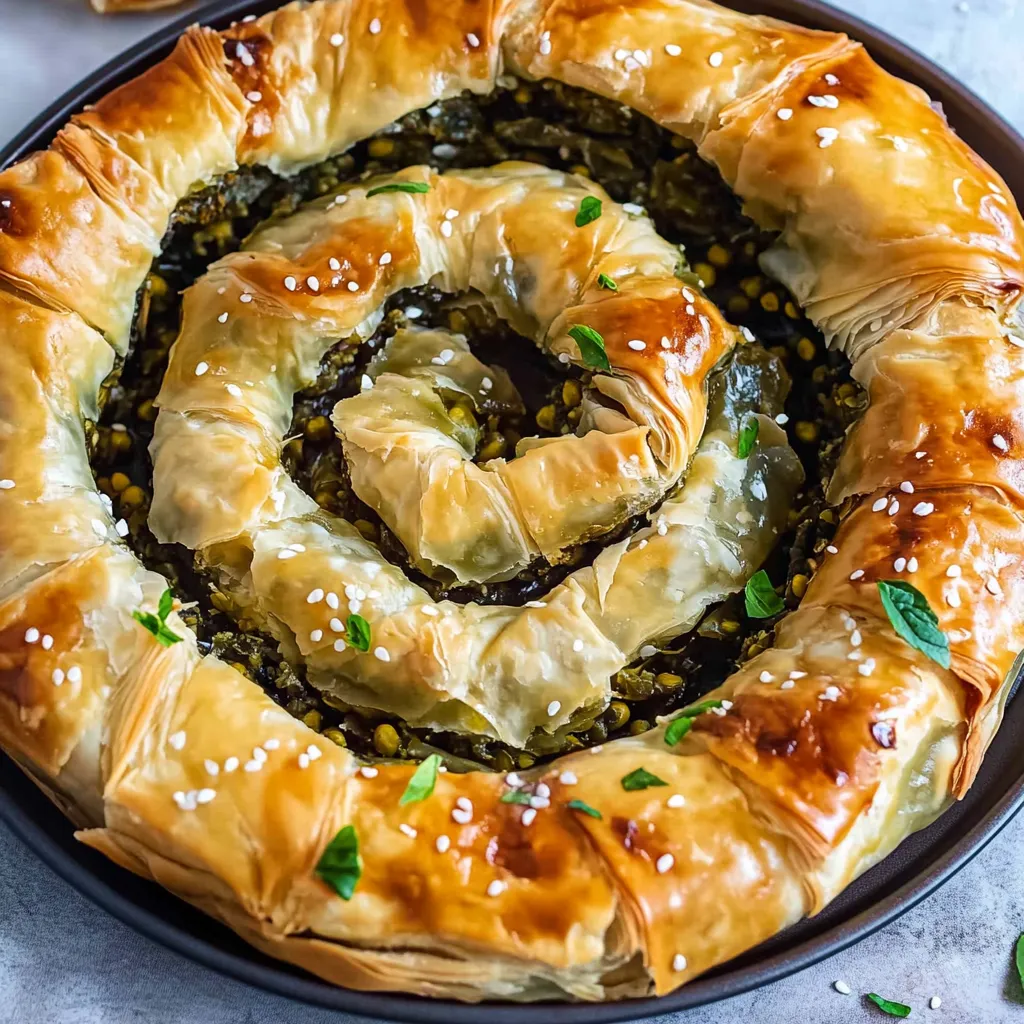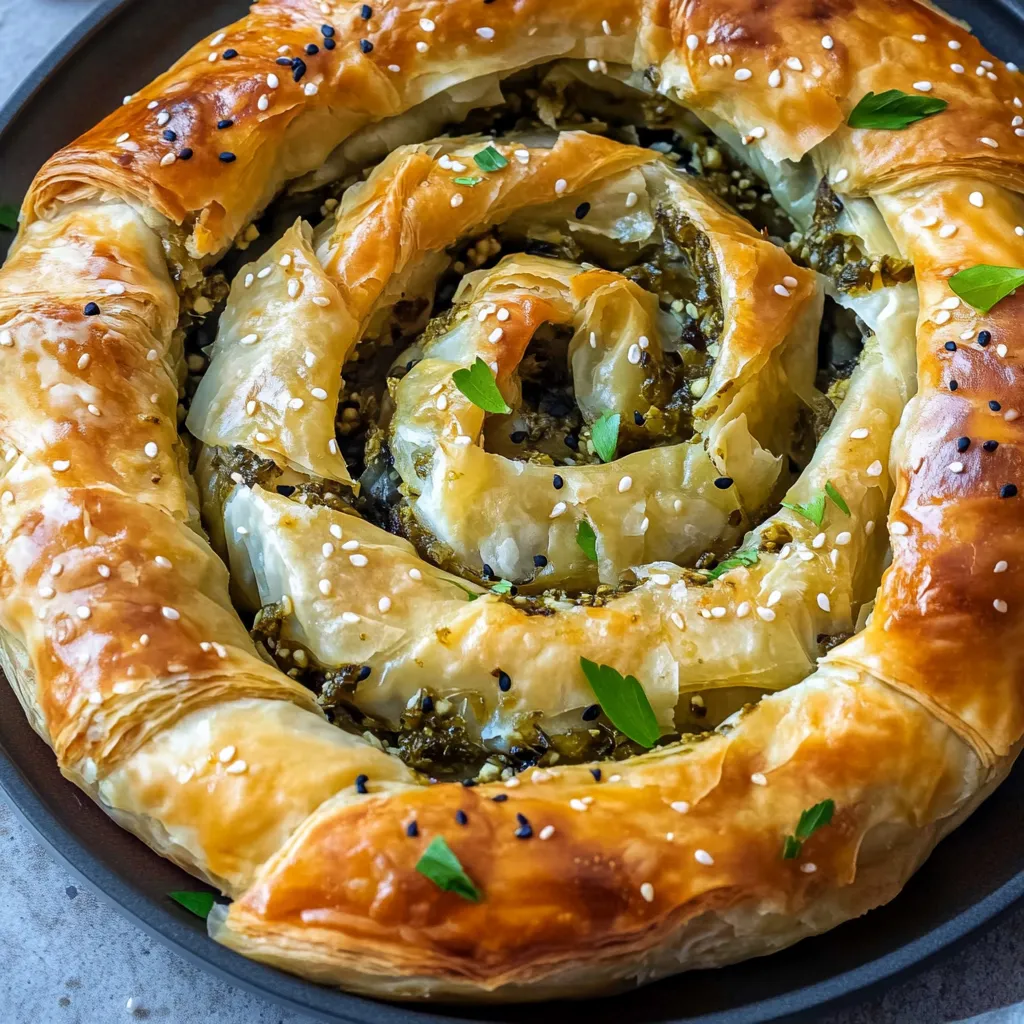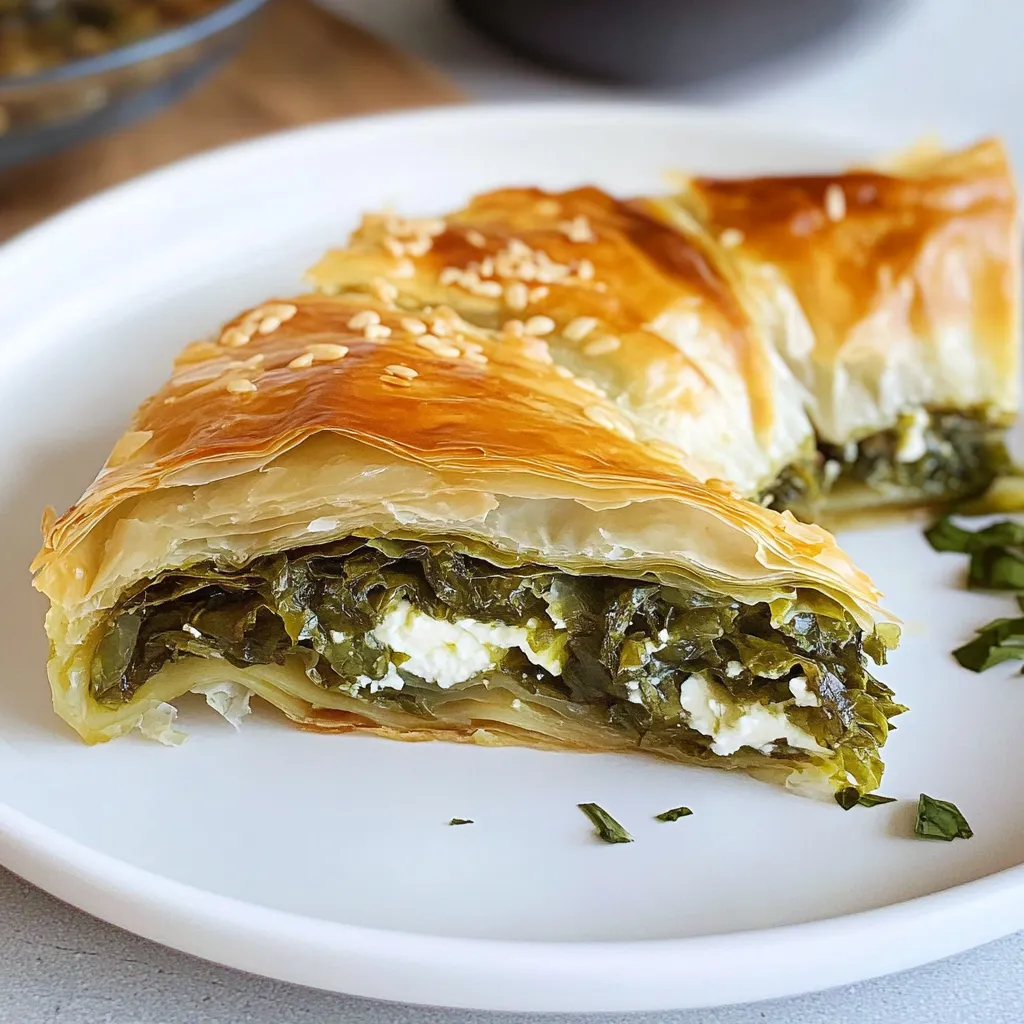 Pin it
Pin it
Perfect Spanakopita Spiral brings the essence of Greek cuisine to your table with layers of crispy phyllo wrapped around a vibrant spinach and feta filling. This impressive dish showcases the beautiful marriage of delicate, buttery pastry with robust Mediterranean flavors that create a truly memorable eating experience. One taste of this golden, flaky creation and you'll understand why spanakopita remains a beloved classic across generations. The unique spiral presentation elevates this traditional dish into something special, making it perfect for entertaining yet simple enough for family meals.
I discovered spanakopita during a cooking vacation in Greece where a local grandmother taught our small group her family recipes. After watching her expertly handle the delicate phyllo dough, I was determined to master the technique myself. This spiral version has become my signature party dish, and guests are always amazed when I reveal how straightforward it is to prepare. Even my children, typically suspicious of anything green, eagerly devour pieces of this golden pastry treasure.
Master Your Ingredients
- Fresh Spinach: Forms the foundation of authentic spanakopita, providing earthy flavor and vibrant color.
- Cheese Combination: Quality feta cheese delivers the characteristic tangy saltiness essential to traditional spanakopita.
- Aromatic Elements: Fresh herbs elevate the filling with bright, aromatic notes that balance the richness of the cheese.
- Phyllo Preparation: Delicate phyllo dough requires careful handling to achieve maximum flakiness.
Cooking Method
- Preparing the Filling:
- Heat olive oil in a skillet over medium heat, then sauté diced onion for five minutes until translucent.
- Adding Spinach:
- Introduce chopped spinach in batches, allowing each portion to wilt before adding more.
- Draining the Spinach:
- Transfer cooked spinach to a colander and press firmly to extract excess moisture.
- Mixing the Ingredients:
- Combine cooled spinach with crumbled feta, ricotta or goat cheese, beaten egg, and herbs in a large bowl.
- Preparing the Phyllo:
- Place two sheets of phyllo on a clean surface, brushing each with melted butter or olive oil before layering.
- Rolling the Spiral:
- Spread filling along the long edge of the phyllo, roll tightly into a cylinder, and shape into a spiral.
- Baking:
- Brush the completed spiral with more olive oil and bake until golden brown, about 30 to 35 minutes.
 Pin it
Pin it
My friend Eleni taught me to listen for the gentle crackling sound as spanakopita bakes, explaining this means the layers are separating properly to create the desired texture. She also shared that her family uses olive oil rather than butter in rural Greece, saying it creates a lighter finish while honoring Mediterranean culinary traditions. These simple insights transformed my early attempts into consistently successful results. Her grandmother would often prepare large batches for family gatherings, the kitchen filled with stories and laughter as everyone anticipated the golden pastries emerging from the oven. This sense of connection through food traditions continues to inspire my own cooking journey.
Inspiring Accompaniments
This golden spiral creates a beautiful centerpiece for any Mediterranean inspired meal. Serve alongside a bright Greek salad with ripe tomatoes, cucumbers, kalamata olives and red onion dressed simply with olive oil and lemon juice.
Creative Variations
This adaptable recipe welcomes thoughtful modifications while maintaining its essential character. Add sautéed leeks for subtle sweetness, replace pine nuts with toasted walnuts for more robust texture, or incorporate sun-dried tomatoes and olives for Mediterranean flavor intensity.
Practical Storage
This spanakopita maintains quality beautifully when properly stored. Refrigerate leftovers in airtight containers for up to three days, or freeze unbaked for up to one month. Bake directly from frozen, adding 10 to 15 minutes to the cooking time.
 Pin it
Pin it
I continue to be amazed by how this seemingly simple combination of ingredients creates such a sophisticated result. The contrast between shatteringly crisp phyllo and savory spinach filling represents everything I love about Mediterranean cooking. The spiral format elevates this traditional dish to showstopping status while honoring its humble Greek origins. Creating this dish connects me to generations of cooks who have perfected these techniques through centuries of tradition. Every time I serve spanakopita, I'm sharing not just food but cultural heritage transformed into a delicious experience that brings people together around my table.
Frequently Asked Questions
- → Can I use frozen spinach instead of fresh spinach?
- Yes, you can use frozen spinach. Make sure to thaw it completely and squeeze out all excess moisture before cooking to prevent your spanakopita from becoming soggy.
- → What can I substitute for feta cheese in spanakopita?
- If you can't use feta, you can substitute with ricotta mixed with a bit of salt for tanginess. Cottage cheese that's been drained and crumbled can also work as an alternative.
- → How do I keep filo pastry from drying out while assembling?
- Cover the stack of filo sheets with a slightly damp kitchen towel while you're working. Only remove one or two sheets at a time, and keep the rest covered to prevent them from becoming brittle.
- → Can spanakopita be made ahead of time?
- Yes, you can assemble spanakopita up to 24 hours in advance and keep it covered in the refrigerator before baking. You can also freeze the unbaked pie for up to 3 months.
- → What's the best way to reheat leftover spanakopita?
- To maintain crispness, reheat spanakopita in a 350°F oven for about 15-20 minutes. Avoid using the microwave as it will make the filo pastry soggy instead of crispy.
